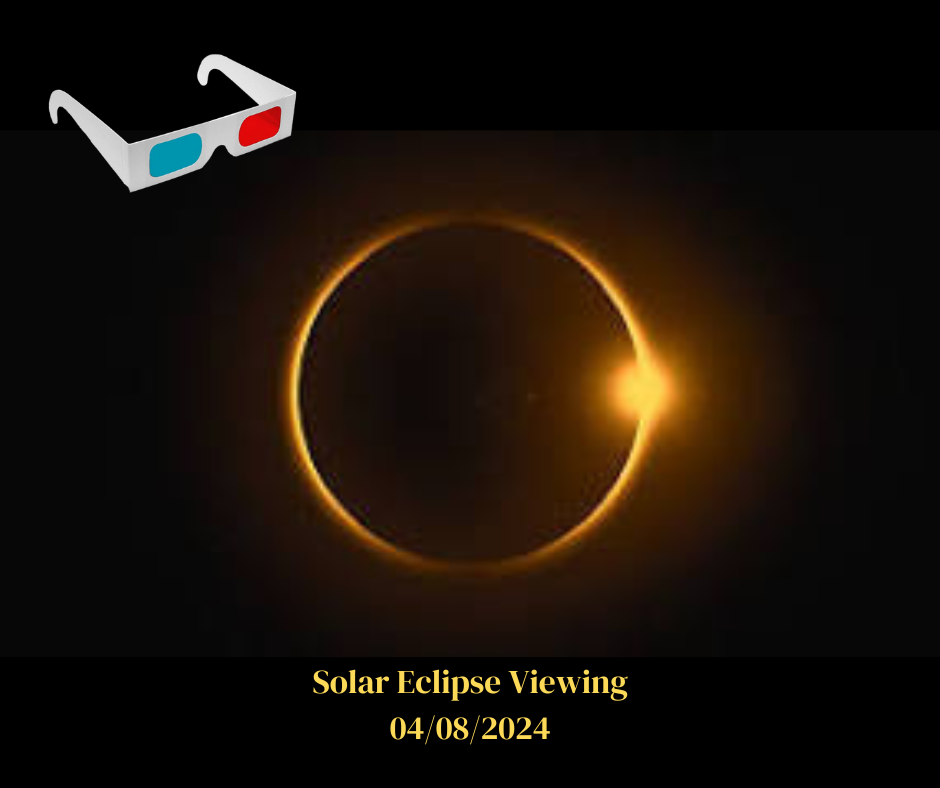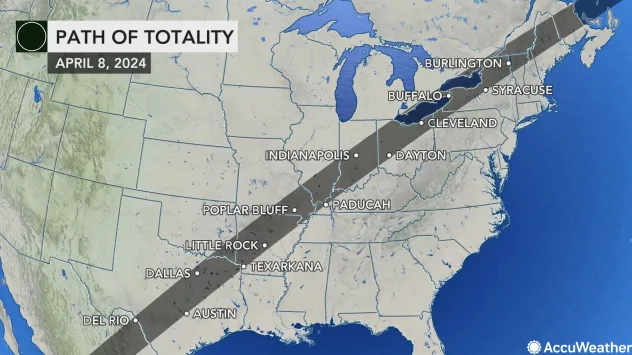
Every year there are several Solar and Lunar eclipses. A solar eclipse happens when, at just the right moment, the Moon passes between the Sun and Earth.
A partial solar eclipse is when the moon only blocks part of the sun light.
A total solar eclipse is when the moon blocks all of the sun’s light. A shadow is cast on part of the earth, by the moon blocking the sun. The shadow cast on the earth by the moon’s shadow as the earth rotates is called the path of totality. This is where to experience the total darkness during the eclipse. It gets so dark along this path it looks like nighttime during a full moon.

We are slightly less than a month out from the historic solar eclipse on April 8, 2024. Parts of western Pennsylvania and eastern Ohio lay in what is known as the path of totality. Pittsburgh does not lie in the path, we will only see a partial eclipse, 97% of totality. Erie will be in totality a short drive north of Pittsburgh.
The Carnegie Science Center on the North Shore will be hosting an “Eclipse Extravaganza in Pittsburgh” with plenty of activities for the family leading up to the big event. The Science Center will have a solar telescope and live stream footage from NASA on the Buhl Planetarium Dome among other activities.
Beginning at approximately 2 PM the moon will start to move in front of the sun. The max view for Pittsburgh will occur at 3:17 PM and end at 4:30 PM.
While this eclipse is an exciting and unique experience, it is crucial to prioritize safety when viewing an eclipse.
During a solar eclipse, it is never safe to look directly at the sun without eye protection specifically designed for solar viewing. Failure to protect the eyes while looking at the sun during a solar eclipse can result in “eclipse blindness” or solar retinopathy, causing damage or destruction to the cells in the retina.
Everyday sunglasses are not safe for looking directly at the sun even very, very dark ones. Specialized solar eclipse glasses are about 100,000 times darker than regular sunglasses. Solar eclipse glasses should be labeled as IS012312–2 international standard compliant. Always inspect your eclipse viewing glasses and handheld viewers for wear If torn, scratched, or damaged in anyway, throw away the device.
When viewing the sun through a camera lens, binoculars, or a telescope using a polarizer does not offer enough protection, it is best to use a special-purpose solar filter. Viewing any part of the bright Sun through a camera lens, binoculars, or a telescope without a special-purpose solar filter secured over the front of the optics can cause severe eye injury. By design, these lens-based devices intensify light rays, damaging both the solar filter and your eyes.
Another concern with a solar eclipse is to protect your skin from invisible UV rays. If you are viewing the eclipse, you may be in the sun for hours. Remember to apply sunscreen and wear protective clothing to prevent skin damage. Sunburn is the skin’s reaction to UV radiation damage to the outermost layers of skin. When your skin gets tan it is the skin reacting to UV radiation by producing more pigmentation. The pigment known as melanin provides the skin with its color and protects the skin against the sun’s rays.
Sources:
www.planetary.org
www.nasa.gov
www.aao.org
www.aas.org
www.carnegiesciencecenter.org
#DrClaudiaWendel
#PittsburghOptometrist
#PittsburghEyeCare
#SolarEclipse
#PearleVisionRobinson
